1.0 Background
The Communist Party of Nepal (Maoists) started 'People's War' in Nepal in 1996 with the twin objective of abolishing monarchy and establishing a communist republic. During this conflict, the nation bleeded and suffered heavy loss in almost all important sectors of the national economy. As many as 17,828 people were killed by the rebel Maoists and the security forces. Besides, 5,800 people were disabled, 25,000 children orphaned, 9,000 women widowed and 14,852 people disappeared.1
The conflict lasted for a decade until the Comprehensive Peace Agreement (CPA) was signed in November 2006. In 2007 the government of Nepal and the CPN (Maoists) agreed to keep the rebel forces in seven cantonments and 21 satellite camps in various parts of the country. As a result, the arms of the Maoists were locked. The United Nations Mission to Nepal (UNMIN) verified the rebel forces in which out of nearly 32,000 fighters, 19,000 plus fighters qualified the test.
In a significant move in 2012, most of the rebel forces agreed to choose voluntary retirement and a few thousand joined the Nepalese army. Until this period the government of Nepal spent a colossal amount of money on the salary, ration and other infrastructural facilities of the fighters. Besides, different national and international organizations, including UNMIN also provided meaningful financial, technical, logistic and other necessary support to the government. It would not have been possible for the government to restore peace in the absence of such support.
2.0 Social Life during the Conflict Period
The social life of the people during the conflict period was most disturbed on account of frequent strikes, security checks, blockades, shutdowns, beatings, threats, humiliation, forced unethical acts, social isolation, rape and sexual harassments. Extra-judicial killings, extortions and abductions were rampant. Women were most vulnerable in the rural areas as many of the youth and male population who protected them escaped from the villages to avoid the atrocities committed by the forces. In several villages, women were forced to burn the dead bodies as there were no males left to do such traditional jobs. In order to avoid atrocities in the villages, over 70,000 of the girls aged between 15 and 30 years were compelled to leave their homes and join restaurants as dancers and waitresses. The situation turned to be so precarious that many of them had no choice but to enter into immoral practices like prostitution in major townships of the country.2
It is estimated that nearly 200,000 to 400,000 people were displaced during the conflict period.3 About two million people are estimated to have fled to overseas countries for employment. In addition, millions of people crossed over to India for the protection of their life and also for employment. As a result, the remittance that constituted only 2.03 per cent of the GDP in 2000 reached 14.9 per cent in 2005 and furthermore to 22.09 per cent in 2010.4
Most significantly, the education sector was hardest hit during the conflict period. Nearly 3,000 teachers had to give up teaching and 700 schools were closed. Hence, almost 100,000 school-going children failed to get education. Also, many of the children were used in the war as human shields, porters, housekeepers, cooks and even as sex slaves.5
The conflict had negative impact on tourism sector as the tourists became apprehensive of the deteriorating law and order situation in the country. Likewise, there was huge destruction of forest and its resources in most part of the country. Medicinal plants, non-timber forest products and wild animals were smuggled. Poaching and hunting of wild animals were rampant.
3.0 Economic Impacts of the Conflict
The economy of Nepal was hardest hit during the conflict period. Each sector of the economy including agriculture, industry, employment, and foreign aid was affected. The Gross Domestic Product (GDP) of the country plummeted to an all time low of 0.8 per cent in 2001-2002. Between 2001 and 2005, it declined from 4.8 per cent to as low as 2.6 per cent. Also affected most was the private sector investment, which declined from 15.4 per cent to 12.6 per cent between 1996 and 2004.6 As a cumulative effect, the rate of economic growth of the country could not increase more than 3.5 per cent in the post-conflict period.
Since the government was almost paralyzed, parallel bodies of the Maoists came into operation in several districts of the country that levied tax, collected road tax, and extorted money from the government officials, school teachers, business communities, industrialists and other sections of the society. They also confiscated some 12,000 pieces of private properties.7
Besides, the rebel forces targeted the banks, particularly the state-owned banks. Even the micro financial institutions and Small Farmer Co-operative Limited were not spared.8 Several banks were looted and robbed. A number of banks were forced to withdraw from the remote and rural areas and confine their activities to the safer places and district headquarters.
There was substantial decline in the development activities during the conflict period. Between 2001 and 2004, the development expenditure of the government declined from 9 per cent of the GDP to 6 per cent.9 In most of the Village Development Committees (VDCs) and District Development Committees (DDCs), development activities came to a halt as the resources meant for the development were diverted to other sectors.
Many of the farmers in different parts of the country left agricultural land uncultivated. Investment in agricultural sector declined to as low as 1 per cent.10 Also, certain farmers had no option but to throw their agricultural products like milk and vegetables on the roads for it was not possible to transport them to the market due to strikes and bandhs.
Because of the growth in labour militancy, industrial production was badly shattered. Nearly 20 to 25 per cent of the private sector sales in the rural market declined during the conflict period. The rate of growth of local production of goods and services declined to as low as 2 per cent in the aftermath of Royal coup of February 1, 2005. Production of carpet, garment, textile, tobacco, beverage and other products fell dramatically, which affected the export sector most. All those who were engaged in trade and commercial activities were harassed. Private investment declined from 15.4 per cent in 1996 to 12.6 per cent in 2004.
Frequent strikes, blockades, shutdowns and extortions discouraged the domestic and foreign investors from making investment in Nepal.11 Many of the investors, including the joint ventures and multinational companies working in Nepal were compelled to stop their production activities as their staff living particularly in the rural areas was threatened. To name a few of such investors, the Dabur Nepal, Surya Nepal, GMR working on Upper Karnali and Upper Marshyangdi and United Telecom Limited had hard time during the conflict period; while the multinational like the Colgate Palmolive Nepal Pvt. Ltd. had to close its operations in Hetauda. Jyoti Spinning Mills in Sarlahi was burnt; while Uniliver Nepal, Coca-Cola Company, hotels and the distilleries were frequently targeted.
In many of the Maoist-controlled areas such as Rolpa, Rukum Salyan and Jajarkot, the Maoists carried out so many land transactions. In 10 Maoist-affected districts like in Palpa, Gulmi, Baglung, Parbat, Arghakhanchi, Pyuthan, Rolpa, Salyan and Rukum, there were 10,000 land transaction cases. The party used to charge two per cent of the tax on each transaction during the conflict period. On January 26, 2012, the UCPN (M) decided that the government of Nepal should not withdraw its decision to legalize the wartime transaction of properties.12 But in view of the mounting pressure from the opposition political parties, the government of Nepal declared that it would not implement the controversial decision to recognize wartime land and property dealings.
With regard to foreign aid, nearly $250 million worth of aid assistance was suspended following the Royal coup of February 1, 2005. Consequently, many of the programmes related to poverty reduction, rural development, education, health and forestry were affected.13Norway cancelled its investment programme worth $500 million and the World Bank withdrew US $ 65 million investment programme. In addition, countries like Japan, Switzerland, Canada, Finland, England, Germany, Norway, Denmark, EU and the Netherlands suspended their aid programmes in the Maoist affected areas, mostly in the mid and far western region of Nepal.14 As a result, Nepal's reputation among the international community was badly eroded and the country was almost at the brink of being declared a failed state.
4.0 Growth in Military Expenditure
As the military purchases during the conflict period shot up phenomenally, most part of the state treasury was spent on security, particularly on activities related to fighting with the rebel forces. The defence budget tripled from Rs. 4 billion to Rs. 12 billion a year. This was largely due to the fact that the number of Nepalese Army more than doubled from 46,000 to 96,000.15 The expenditure of the state on security almost doubled from 1.6 per cent of the GDP to 3 per cent between 2001 and 2004.
Even the Maoist party was not far behind in mobilizing resources in their bid to keep alive the insurgency movement. The operation cost of the Maoists reached 15 million rupees each day, which was over and above the cost in buying the weapons. They had employed 30-35 per cent of women in their forces.
5.0 Cost of Conflict
DEFID estimated the cost of conflict between 8 and 10 per cent of the GDP; while the National Peace Campaign estimated the cost to the level of $66.2 billion between 1996 and 2003. Also, economic costs of conflict are estimated at $2 billion.16
Reports are that some 1,500 buildings of the VDCs were partially or completely destroyed in different parts of the country.5 Besides, a number of telecommunication towers, roads, air strips, bridges, government buildings, banks, police stations, school buildings and power plants were damaged, which cost the nation $250 million until 2002. Similarly, government property worth five billion rupees was destroyed.18 An account of the cost caused by the damage or destruction of different infrastructures in the country such as police posts, roads, forest, health and other sectors is briefly presented in the following table:
Table 1: Infrastructures damaged by Maoists between February 1996 and July 2005.

5.0 State Funds for Peacebuilding
Amidst the moments of conflicts and despair, credit largely goes to the 12-point agreement signed between the CPN (Maoists) and the Seven Parties of Nepal in November 2005 and also to the Comprehensive Peace Agreement between the CPN (Maoists) and the government of Nepal in 2006 for bringing certain level of truce to the conflict-ridden nation. In the process of giving cushion to the peace effort, the United Nations Peace Fund for Nepal (UNPFN) was created in March 2007 in order to complement the UN wider peace building efforts in conflict monitoring, elections, mine action, transitional justice and registration/verification process in Maoist army cantonments.19 Accordingly, funding arrangement of $10 million was made for such activities in July 2008.
As per the report, the government of Nepal spent two billion rupees on the salary, ration and management of the Maoist combatants in 2009-10. In the same year, the government also provided Rs. 570 million for the upgradation of the infrastructural facilities in the surrounding of the camps. Each combatant was paid Rs. 5,000.00 as monthly salary in addition to the per diem of Rs. 72 to Rs. 110. On an average, the government provided Rs. 2,730 to each of the 19,525 combatants as ration allowance.
Furthermore, the Relief and Rehabilitation Division under the Ministry of Peace and Reconstruction is reported to have released Rs. 1.79 billion in 2011-12 for distribution among the families of those killed during the conflict period, which included the amount of Rs. 199.8 million disbursed for the families of the disappeared and Rs. 124.5 million for the wives of the missing persons.20 The government also provided Rs. 100,000 to each of the families of those who were killed during the conflict period since 2008. However, many of the rightful claimants did not turn up to receive the relief package offered to them by the government. This was due to the fact that many of the displaced people and also those who migrated outside for security reasons and in search of livelihood during the conflict period did not return to their land. As per the record, nearly 3,864 families of the 17,883 persons killed during the conflict period failed to receive such support. In total, the government of Nepal spent a whopping amount of Rs. 20 billion to manage those Maoist insurgents who surrendered arms in 2006.21
People's Liberation Army (PLA) Fund
Altogether Rs. 3 billion was deposited in the PLA fund. The first source of PLA fund included the amount of Rs. 1.14 billion collected from the monthly salaries of the combatants, Rs. 1.34 billion drawn in the name of absentee combatants and Rs. 600 million as commissions against ration contracts.22 The Maoist party deducted Rs. 1,000 from the salaries of the combatants after their verification was done by the United Nation Mission to Nepal in Nepal in 2007.23 Thus, the total amount of money collected by deducting Rs. 1,000 from each of the 19,525 combatants for five years formed Rs. 1.14 billion. This amount was deposited in PLA fund, which was created with the promise that 50 per cent of the money would go to the Young Communist League (YCL), the youth wing of the CPN (Maoists), and the remaining would be returned to the combatants at the time of their retirement.24Besides, the second source of PLA fund amounting to Rs. 1.34 billion had been collected from the salaries of the absentee combatants for five years. In December 2011, the Special Committee for the Supervision, Integration, and Rehabilitation of former combatants found that 2,432 combatants were missing from the cantonments. And the third source of PLA fund amounting to Rs. 600 million came from commission given by the contractors to PLA. Each month the government on average provided Rs. 2,730 to each of the 19,525 combatants as ration allowance. But the PLA commanders revealed that they had only Rs. 460 million in total in PLA fund when they were pressed by the combatants to become transparent about the money deposited in the fund.
Voluntary Retirement Scheme
In 2012, the government of Nepal offered the Maoist combatants the choice of voluntary retirement. As per this decision, the combatants who chose to retire voluntarily were offered incentives varying between Rs. 500,000 and 800,000.25 In the first installment, each of the 7,365 combatants opting for voluntary retirement was offered an amount between Rs. 250,000 and Rs. 400,000.
It was a different matter that PLA commanders forced the combatant opting for voluntary retirement to share part of the amount offered to them through cheques. There were reports that those of the combatants who defied the commanders were dealt with harshly. This created dissatisfaction among the victimized combatants to such an extent that they launched a number of protest programmes at many places against the high-handedness of the commanders. But later on some attempts were made to pacify the disgruntled combatants. The Maoist party assured that the amount collected from the combatants from their voluntary retirement scheme would be used to provide relief package to the disqualified and minors who happened to be discharged earlier.
Nevertheless, the Special Committee for the Supervision, Integration, and Rehabilitation of former combatants was able to complete its job by providing cheques to 7,200 former Maoist combatants out of the total 7,365 combatants opting for voluntary retirement during the period February 2 and February 11, 2012.26 Those fighters who did not receive cheques for one or the other reason were asked to do so from the secretariat in Kathmandu.
6.0 Conclusion
After the Maoists started war in the country, Nepal government had very little knowledge of conflict management. It had no prior experience in this field. Yet the government adopted some important measures that ultimately proved effective in mainstreaming the Maoist forces in the country. This enabled most of the rebel forces to take voluntary retirement. Also, this paved the way for Maoist fighters to get integrated into the Nepalese Army. Subsequently, some 70 combatants also joined Nepal Army officer cadets. The Army has now managed to get control over the camps and their weapons. This has ended the system of one country with two armies. With this development, the peace process has come to a logical conclusion.
(The author is Executive Director, Centre for Economic and Technical Studies, Nepal)
Endnotes
- Hari Bansh Jha,"The Economics of Peace: A Nepalese Perspective," ORF Occasional Paper #29, December 2011, New Delhi: Observer Research Foundation, p. 14.
- Bishnu Raj Upreti. 2010. Armed Conflict and Peace Process in Nepal: The Maoist insurgency, past negotiations, and opportunities for conflict transformation. New Delhi: Adroid Publisherrs, p. 260.
- Annpurn Post, July 7 & 29, 2005
- Anjan Pandey and Prakash Kumar Shrestha, “Parasitical State: Economic Consequences of Remittance,” in Nepalnews.com, February 14, 2012 in http://www.nepalnews.com/home/index.php/top-column-hidden-menu/16659-parasitical-st
- Tek Raj Gyawali, "Socio-Economic Impact of Political Insurgency in Nepal," in http://management.kochi-tech.ac.jp/pdf/ssms200
- Bishnu Raj Upreti, no.3, p. 257.
- Ramesh Khatry, "Looters' republic," My Republica, 25 March 2012 in http://www.myrepublica.com/portal/index.php?action=news_details&news_id=33178.
- Armin Hofmann and Helmut Grossmann. 2005. Rural Finance in Conflict Environments – Experiences from Nepal's Small-Farmer Cooperatives Limited. Kathmandu: GTZ, p. 6.
- Frances Stewart, "How Does conflict Undermine Human Development?" in http://hdrstatsnet.undp.org/forum/messageview.cfm?catid=12&threadid=141
- Hari Bansh Jha. 2010. A Rapid Situation Assessment on Agriculture and Migration in Nepal. (Unpublished Report). Centre for Economic and Technical Studies, Kathmandu: p. 27.
- Sungsup Ra and Bipul Singh. 2005. "Nepal: Measuring the Economic Costs of Conflict: The Effect of Declining Development Expenditure" in Asian Development Bank: Working Paper Series No. 2. Nepal Resident Mission,
- Republica, “Govt decision strains parties-Maoist relations further,” My Republica, January 27, 2012 in http://www.myrepublica.com/portal/index.php?action=news_details&news_id=41308.
- Surendra R. Devkota, “Politico-Economics of Royal Takeover in Nepal” in www.globalpolitician.com/21134-economics.
- Gunanidhi Sharma, "Cost of Conflict and Donors' Dilemma: How is Nepal Coping?" in Ananda P Shrestha and Hari Upreti (Ed.). 2004. Critical Barriers to the Negotiation of Armed Conflict in Nepal. Kathmandu: Nepal Foundation for Advanced Studies, p. 161.
- Kul Chandra Gautam, "Rollback violence," Nepali Times, July 17, 2009 in http://www.nepaltimes.com.np/issue/2009/07/17/GuestColumn/16127.
- Dev Raj Dahal. 2006. Civil Society Groups in Nepal: Their Roles in Conflict and Peace Building. Kathmandu: Support for Peace and Development Initiative (UNDP), p. 27
- Prakash S. Mahat, “Socio-economic Transformation of Rural Areas for Peace and Democracy,” The Telegraph Weekly, July 5, 2006.
- Gunanidhi Sharma, no. 15, p. 161
- www.unpbf.org/countries/nepal/
- Gani Ansari, “Victims’ non-acceptance of relief package worries govt,” My Republica March 14, 2012 in http://www.myrepublica.com/portal/index.php?action=news_details&news_id=32792.
- Nepalnews.com, "Rs 20 billion spent from state coffer to manage cantonments of disarmed Maoist insurgents" in http://www.nepalnews.com/archive/2013/aug/aug10/news02.php
- Kiran Pun, “Combatants suspect misuse of Rs. 3 billion from PLA fund,” My Republica, February 9, 2012 in http://www.myrepublica.com/portal/index.php?action=news_details&news_id=41832
- Kamal Dev Bhattarai, “Pocketing fighters’ cash party’s policy” February 7, 2012 in http://www.ekantipur.com/2012/02/07/top-story/pocketing-fighters-cash-partys-policy/3485...
- Kiran Pun, “Why the cantonments imploded?” My Republica, April 11, 2012.
- Kamal Dev Bhattarai, “Maoist party to give cash incentives to YCL cadres,” February 8, 2012 in http://www.ekantipur.com/2012/02/08/top-story/maoist-party-to-give-cash-incentives-to-ycl...
- Nepalnews.com, “Distribution of cheque to retiring combatants complete,”February 12, 2012 in http://www.nepalnews.com/archive/2012/feb/feb12/news01.php.
Published Date: 17th October 2013, Image Source: http://libcom.org


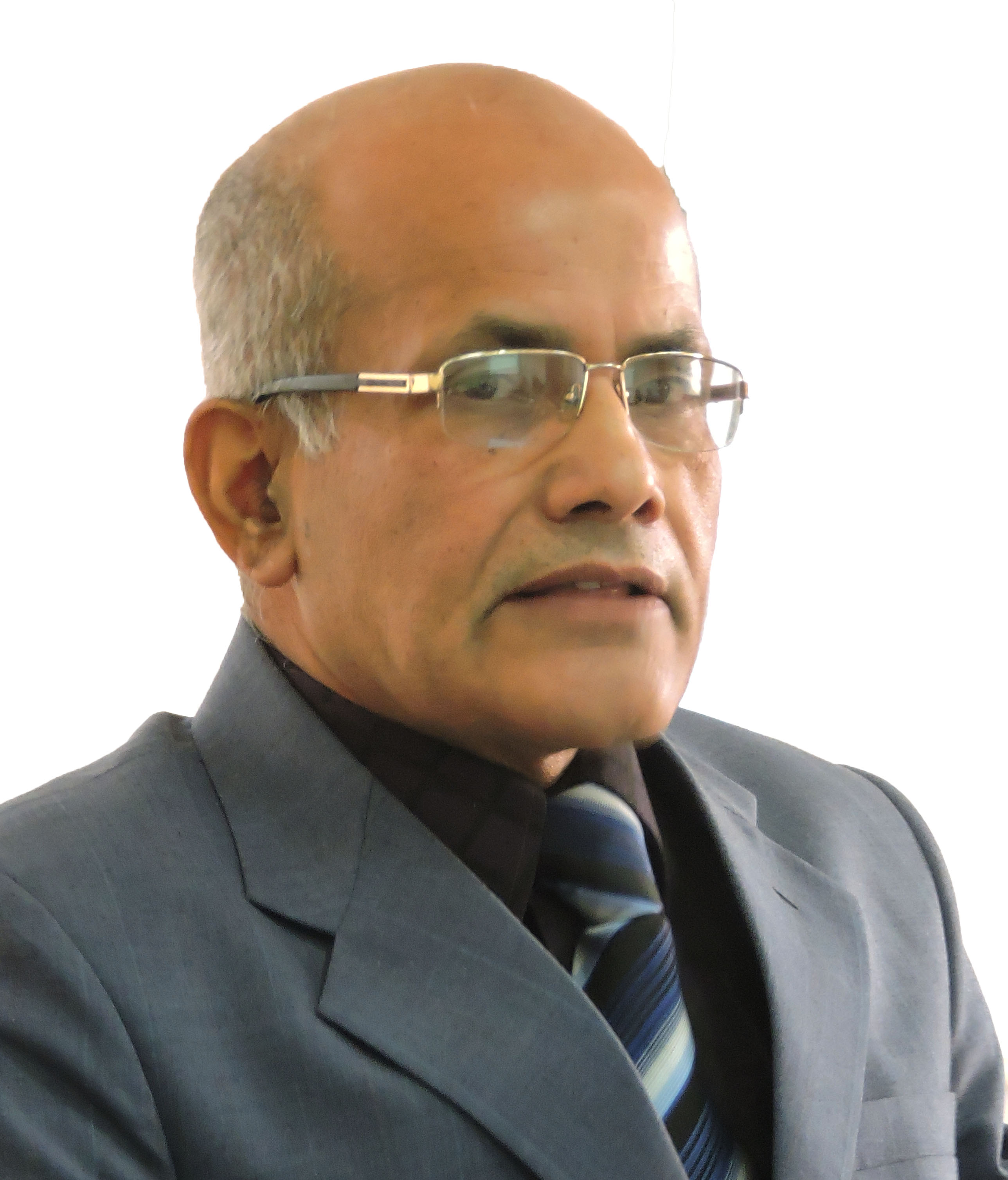

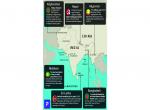
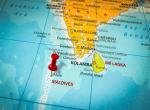

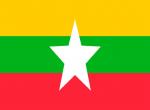

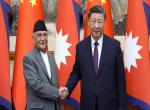
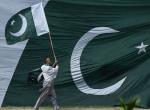
Post new comment